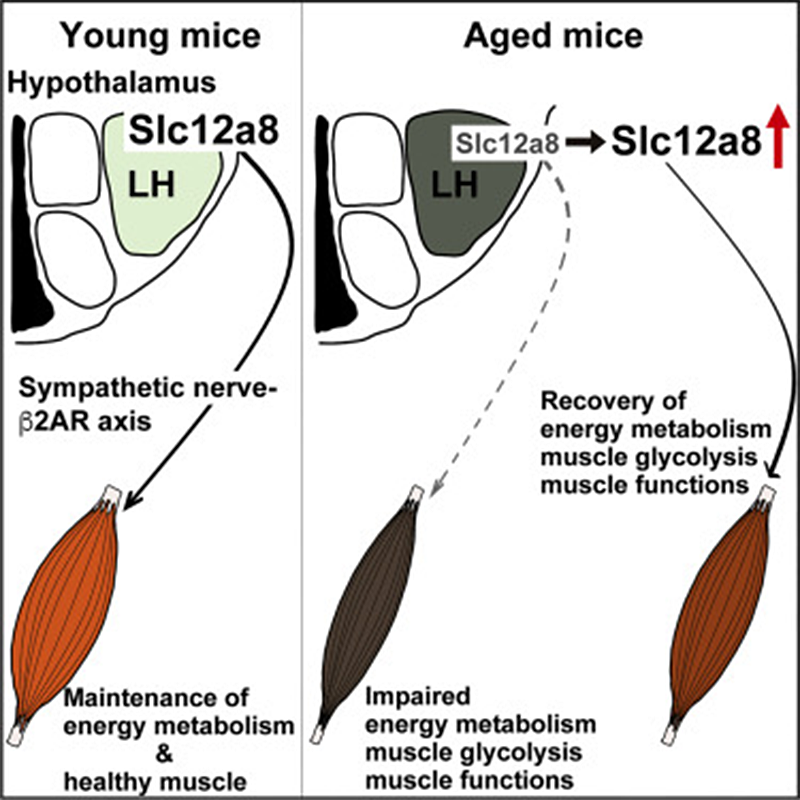A new study shows that increased levels in the brain of a molecule called Slc128a, which transports NMN into cells, reduces a type of muscle decline in older adults called sarcopenia. Likewise, they showed that reducing levels of Slc128a in the brain caused the muscles to become fatigued and weakened again.
Doubling Slc128a Dramatically Improved Muscle Strength and Endurance
It’s known that NMN transporters like Slc128a help to maintain NAD+ levels as we age. This caused researchers to speculate what may happen if levels of the transporter were increased.
They found that when levels of Slc128c in the brain doubled, muscle strength and endurance were drastically improved. The results showed that by increasing the number of NMN transporters in the brain, muscle metabolism and function improved, alleviating signs of sarcopenia.
.

.
Researchers then confirmed this finding by reducing the amount of Slc128a in the brains of mice by about 40%, leading to reduced muscle strength and endurance, similar to mice with sarcopenia. They also discovered that the amount of carbohydrates burned for muscle energy declined as NMN transporters were reduced.
“Our results highlight a key role of Slc12a8 in the [brain] for regulation of energy metabolism and skeletal muscle functions and imply its importance in the pathogenesis of sarcopenia and frailty during aging” (1)
.

.
Is NMN Alone Enough to Alleviate Sarcopenia?
There is tantalizing evidence that NMN supplements alone could be enough to alleviate symptoms of sarcopenia. In rodent studies, it has been established that NMN supplementation restored muscle function and alleviated sarcopenia in older rodents.
“We have previously demonstrated that Sirt1, a mammalian NAD+-dependent protein deacetylase, in the hypothalamus plays a critical role in regulation of age-associated changes in tissue functions and lifespan in mice”
Now that a functional link has been established between Slc128a and onset of sarcopenia, figuring out how to increase levels of Slc128a in the brain as we age using genetic medicines or other pharmaceuticals could give us even more ways of combating sarcopenia in older adults.
“Gaining a better understanding of the molecular mechanisms of sarcopenia and frailty will allow us to identify effective pharmacological approaches and develop therapeutic strategies to prevent and/or treat sarcopenia and frailty”
